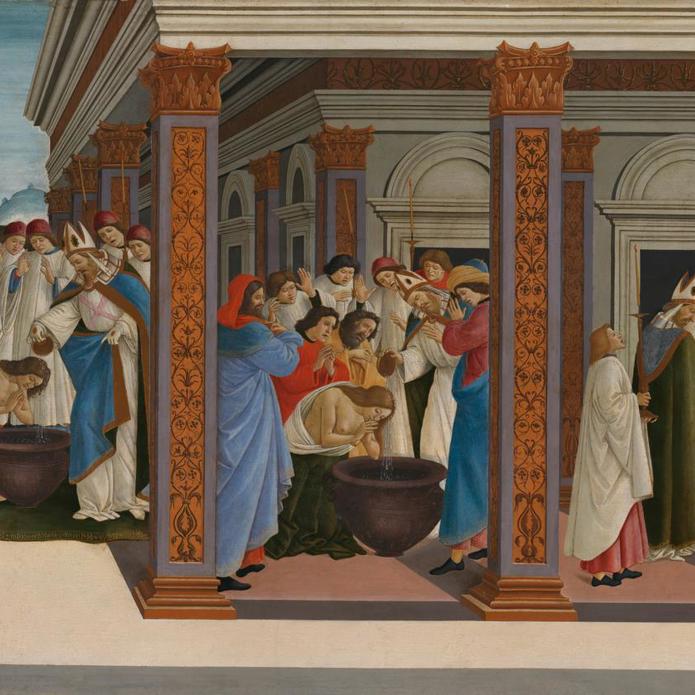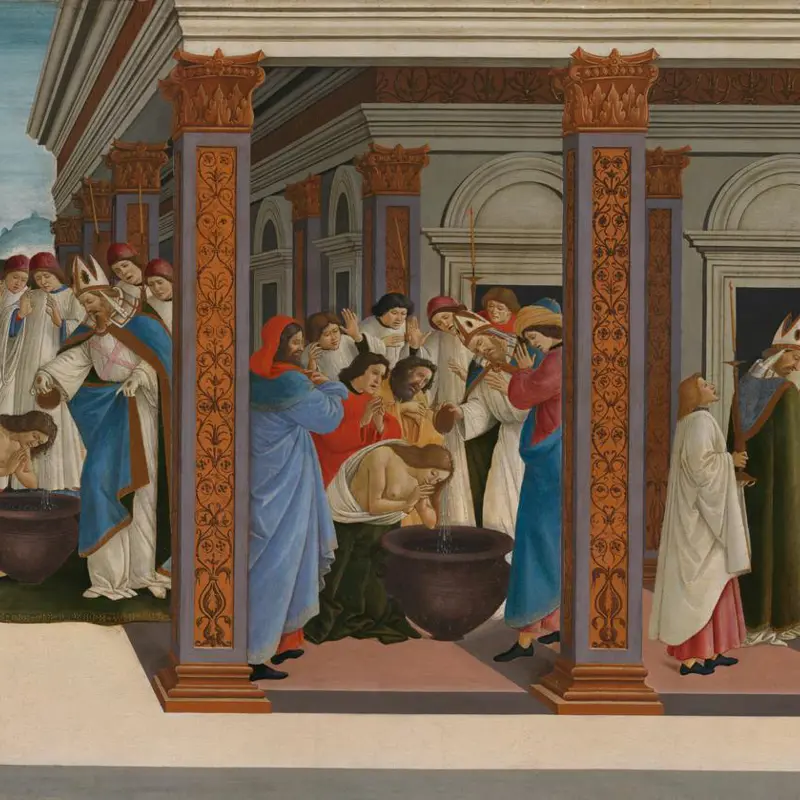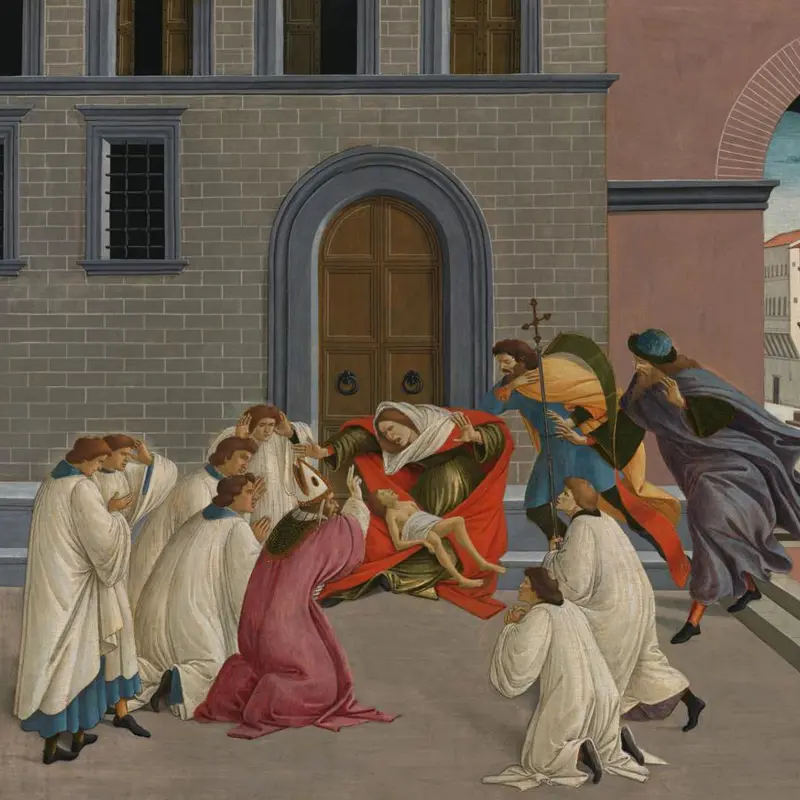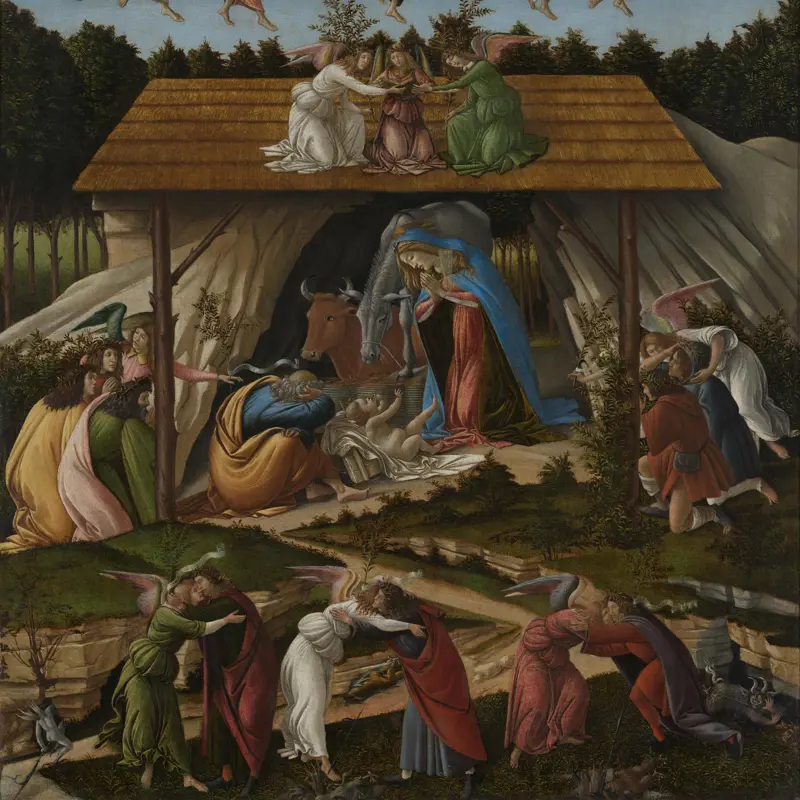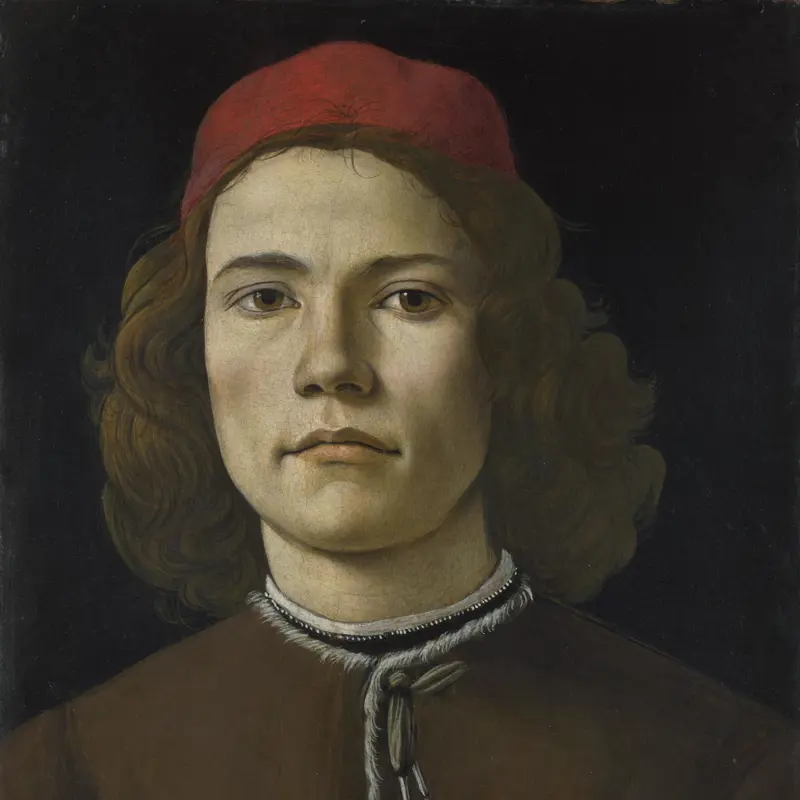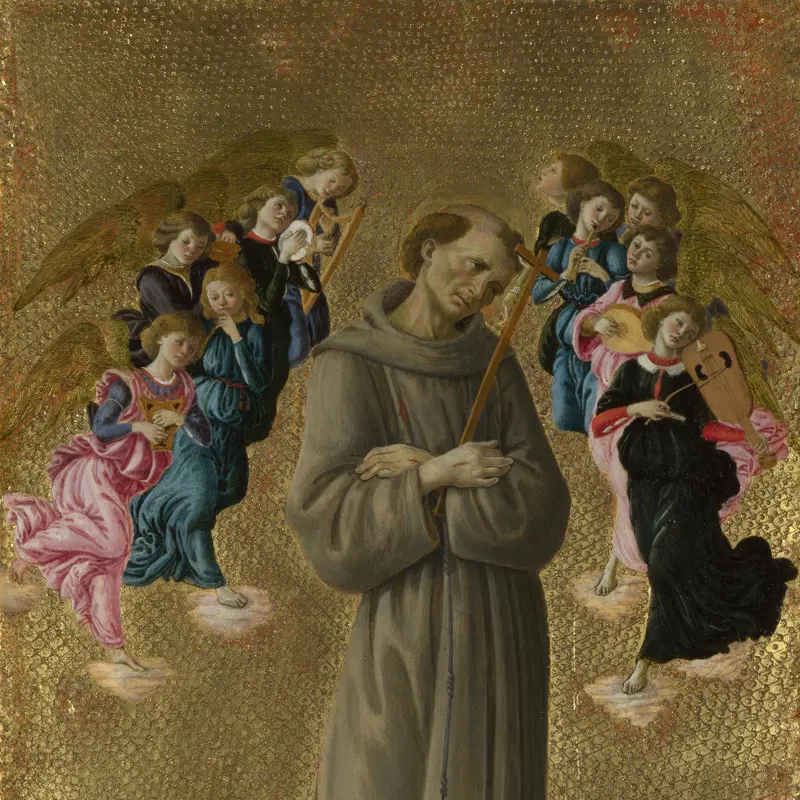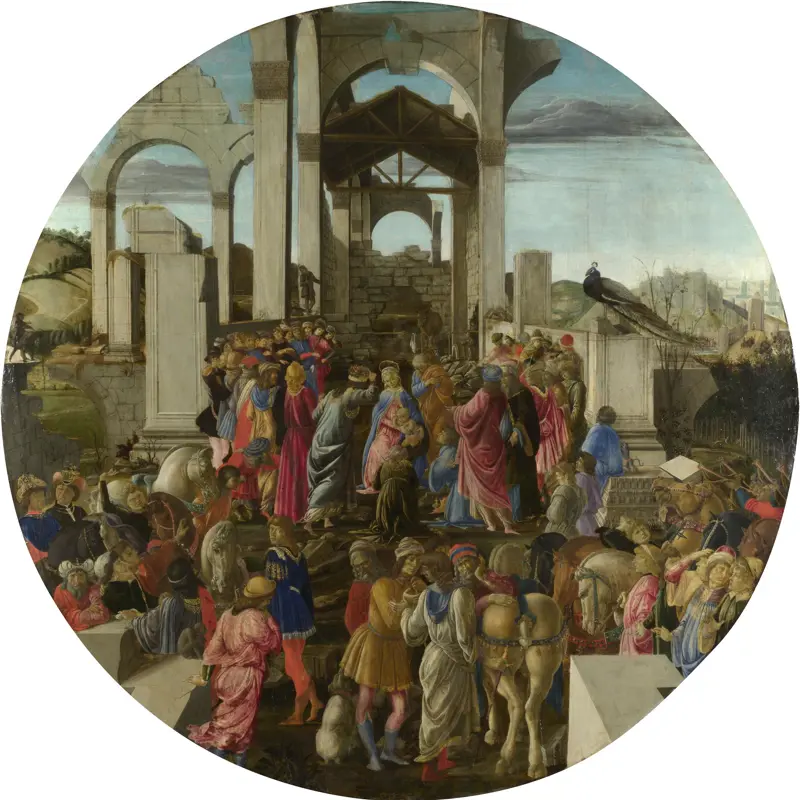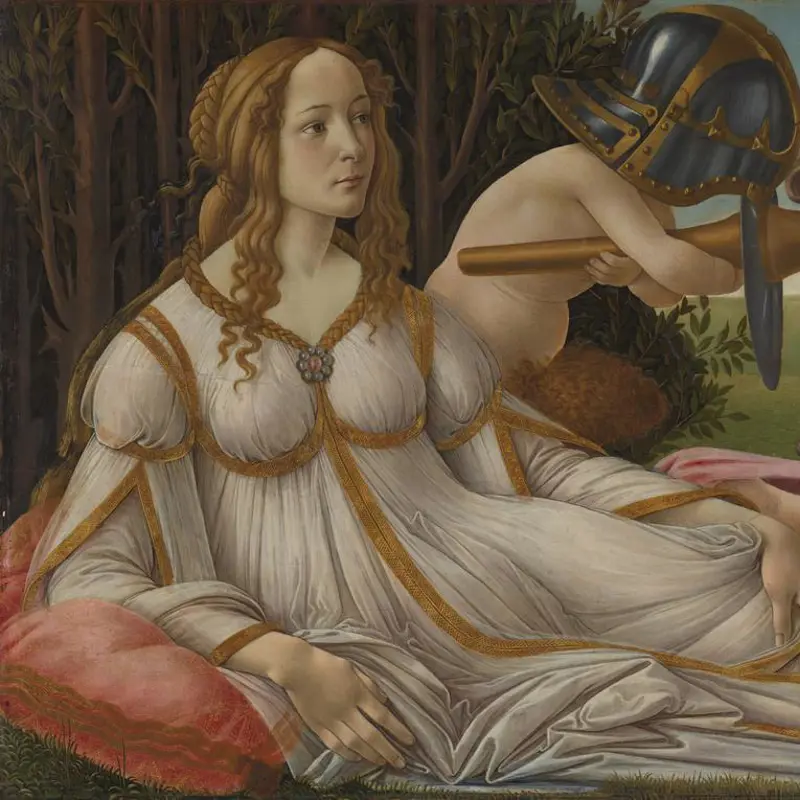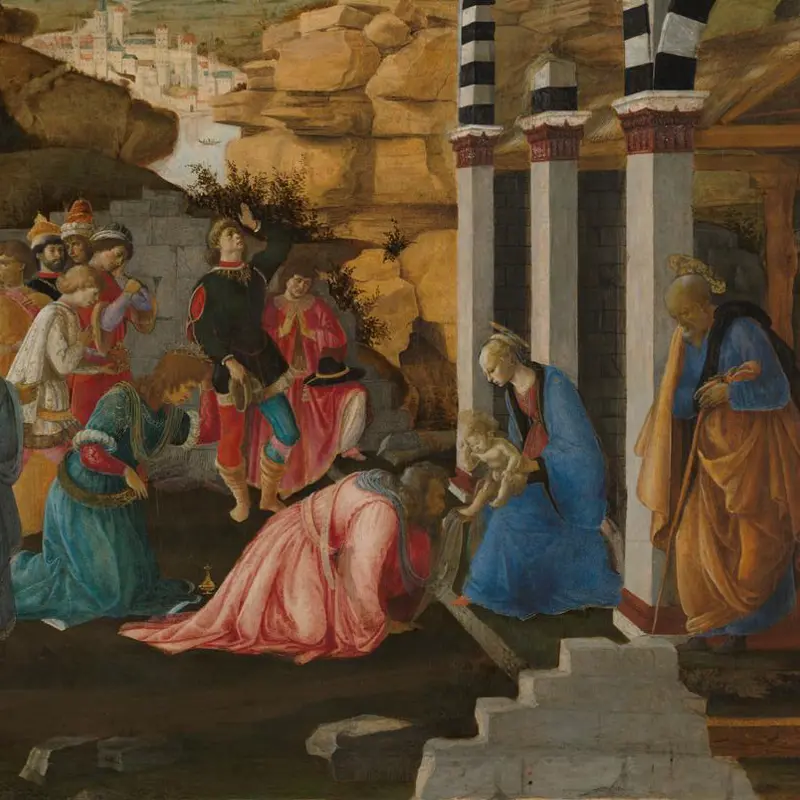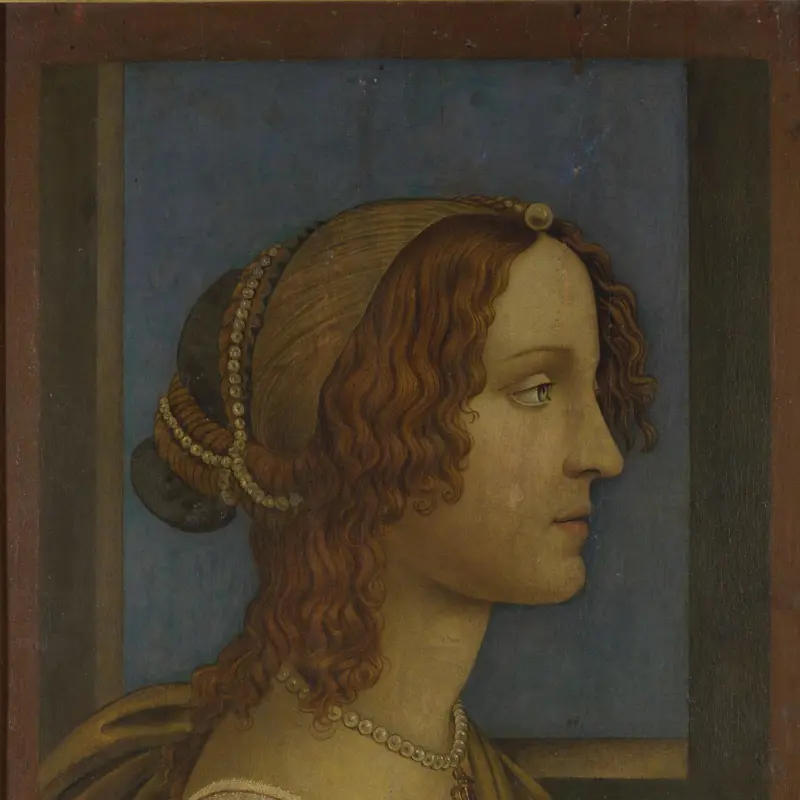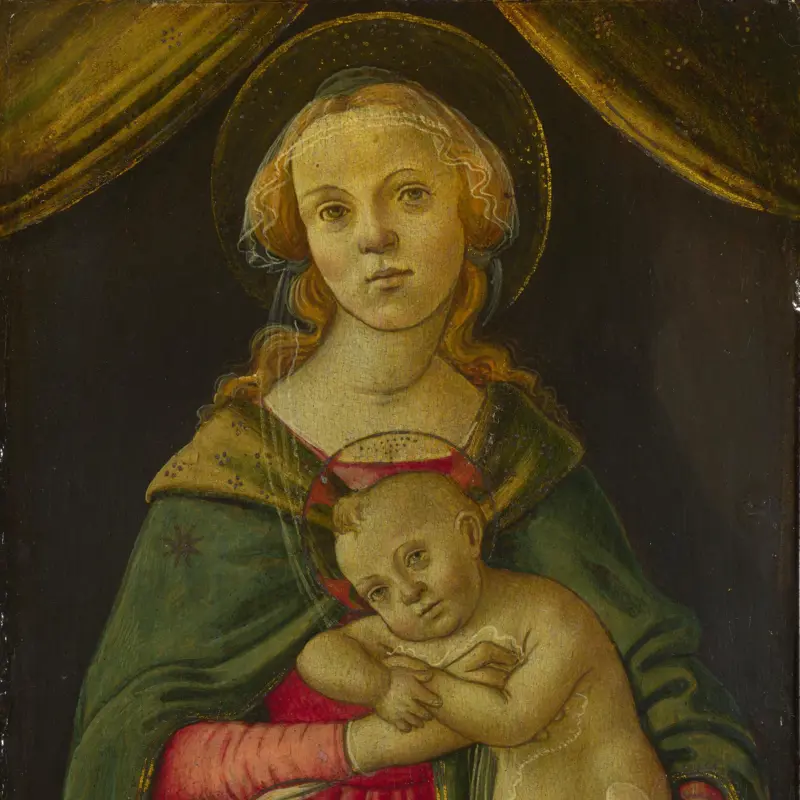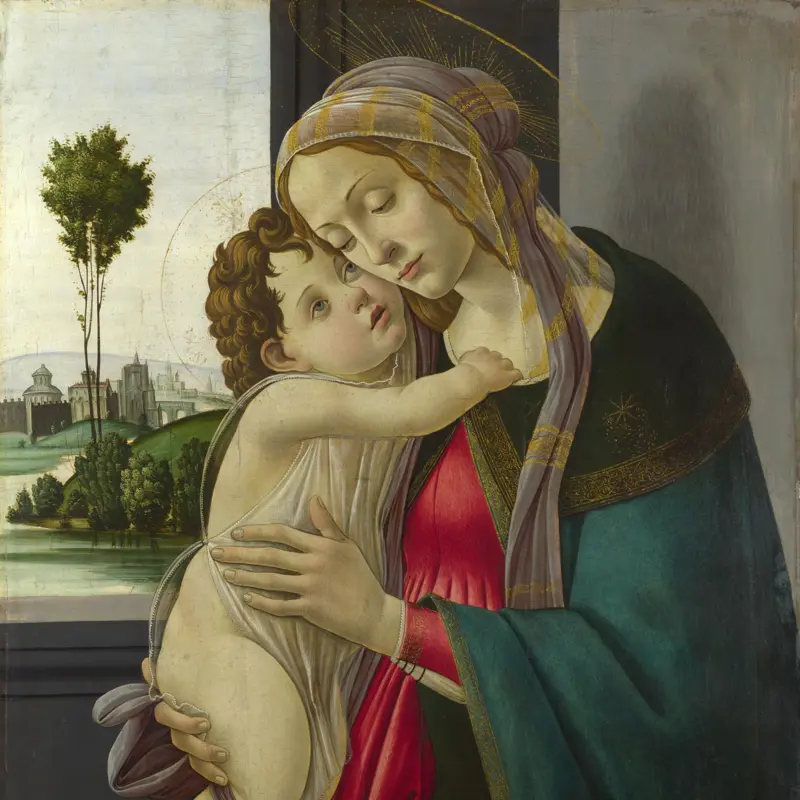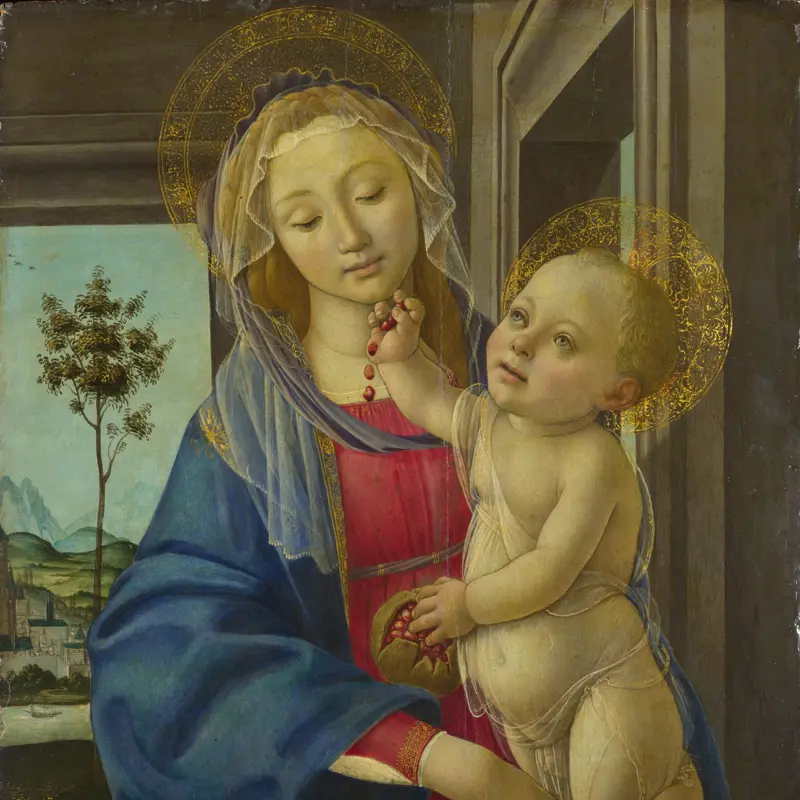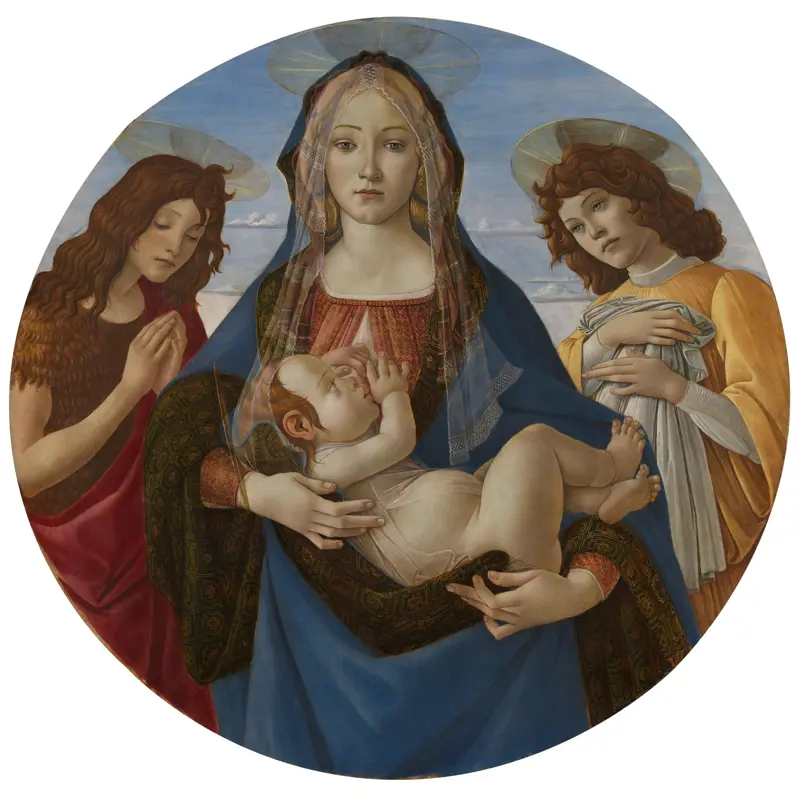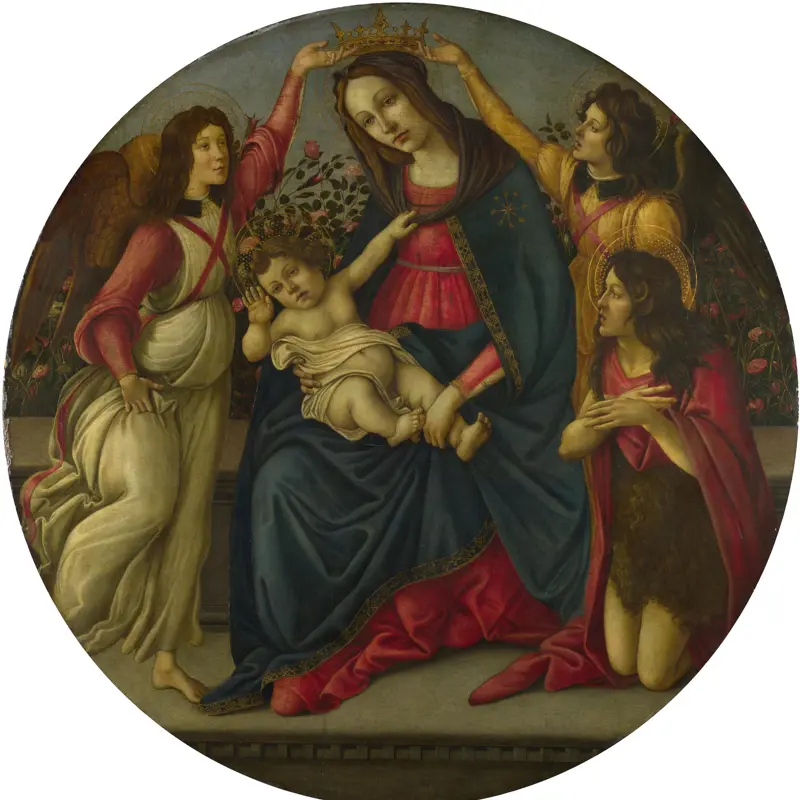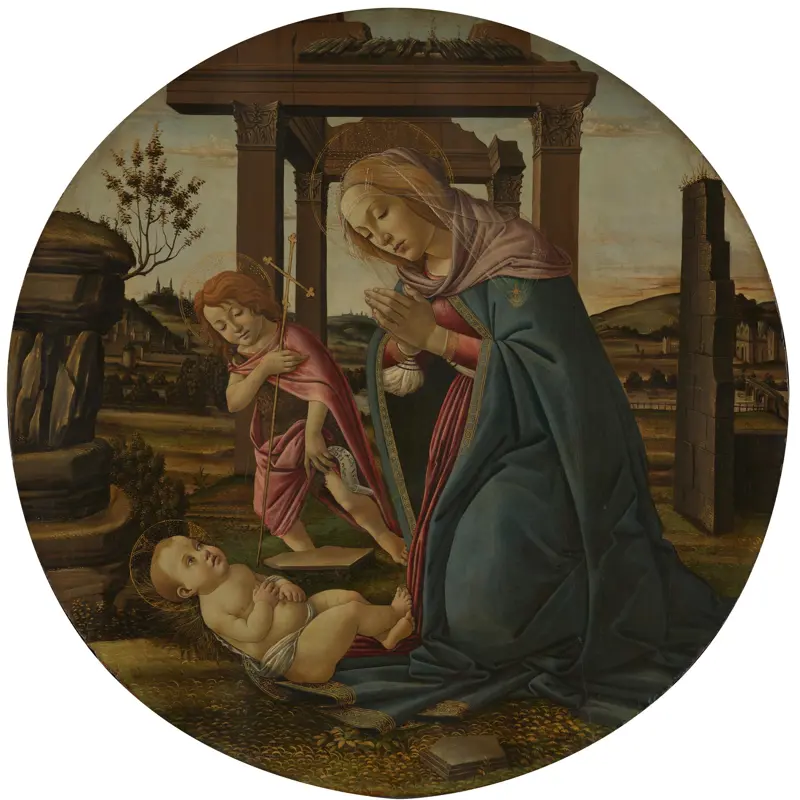Sandro Botticelli, 'Three Miracles of Saint Zenobius', about 1500
About the work
Overview
This is the second panel in a series of four paintings that tell the story of Florence’s patron saint, Zenobius. Botticelli shows three of the saint’s miracles set in the streets of Florence. In the first scene, on the far left, he shows the saint – who was the bishop of Florence – dressed in a bishop’s mitre and white gloves, exorcising two boys of demons. In the central scene Zenobius restores a child to life as he lies on the lap of his wailing mother. The final episode shows Zenobius curing a blind beggar, placing his fingers over his eyelids. The architectural backdrop would have been familiar to Florentine locals: the large archway is probably the Volta di San Pietro, which still exists. It is in the square of the church of San Pier Maggiore, which Zenobius founded and which is shown here as the backdrop to the scene of the healing of the blind man.
Key facts
Details
- Full title
- Three Miracles of Saint Zenobius
- Artist
- Sandro Botticelli
- Artist dates
- About 1445 - 1510
- Part of the series
- Two Spalliera Panels
- Date made
- About 1500
- Medium and support
- Egg tempera on wood
- Dimensions
- 64.8 × 139.7 cm
- Acquisition credit
- Mond Bequest, 1924
- Inventory number
- NG3919
- Location
- Room 60
- Collection
- Main Collection
Provenance
Additional information
Text extracted from the ‘Provenance’ section of the catalogue entry in Martin Davies, ‘National Gallery Catalogues: The Earlier Italian Schools’, London 1986; for further information, see the full catalogue entry.
Exhibition history
-
2009Botticelli.Städelsches Kunstinstitut und Städtische Galerie13 November 2009 - 28 February 2010
-
2014Building the Picture: Architecture in Italian Renaissance PaintingThe National Gallery (London)30 April 2014 - 21 September 2014
-
2015Visions of Paradise: Botticini's Palmieri AltarpieceThe National Gallery (London)4 November 2015 - 14 February 2016
-
2016Stanley Spencer: Of Angels and DirtThe Hepworth Wakefield24 June 2016 - 5 October 2016
-
2019Botticelli: Heroines + HeroesIsabella Stewart Gardner Museum14 February 2019 - 19 May 2019
-
2023Masterpieces from the National GalleryShanghai Art Museum East17 January 2023 - 7 May 2023National Museum of Korea2 June 2023 - 9 October 2023Hong Kong Palace Museum22 November 2023 - 11 April 2024Chimei Museum2 May 2024 - 1 September 2024
Bibliography
-
1894Royal Academy of Arts, Exhibition of Works by the Old Masters, and by Deceased Masters of the British School (exh. cat. Royal Academy of Arts, 1894), London 1894
-
1951Davies, Martin, National Gallery Catalogues: The Earlier Italian Schools, London 1951
-
1986Davies, Martin, National Gallery Catalogues: The Earlier Italian Schools, revised edn, London 1986
-
2001
C. Baker and T. Henry, The National Gallery: Complete Illustrated Catalogue, London 2001
About this record
If you know more about this work or have spotted an error, please contact us. Please note that exhibition histories are listed from 2009 onwards. Bibliographies may not be complete; more comprehensive information is available in the National Gallery Library.
Images
About the series: Two Spalliera Panels
Overview
These two panels come from a series of four that were made by Botticelli late in his career, and which celebrate the life of Saint Zenobius, the patron saint of Florence who lived in the fifth century. The panels have the shape of paintings known as spalliere after the Italian word for shoulder: spalla. Paintings like this were usually hung at shoulder height, often in bedrooms. They were frequently made to celebrate marriages, but it seems unlikely this set was made for that purpose: it begins with Zenobius’s rejection of his fiancée in favour of a life in service of God. The panels show Zenobius’s conversion and baptism, his ordination as Bishop of Florence and the miracles that he performed there. Botticelli has painted young men in white robes as witnesses to many of these episodes; they may represent members of the religious youth group dedicated to the saint, the Compagnia della Purificazione e di San Zanobi (‘The company of the Purification and of Saint Zenobius’). It is possible that Botticelli painted these panels for their rooms.

